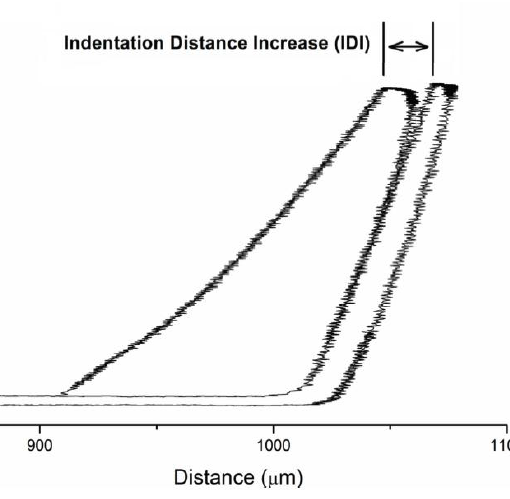Abstract
he serious health risks posed by bone fractures create a growing need for accurately diagnosing fracture risk. The Reference Point Indentation instrument (RPI) directly measures key mechanical properties in vivo to assess bone fracturability. There is a wealth of information that could be obtained from measuring cryopreserved bone samples with the RPI. Since it is unknown how freezing affects these key mechanical properties, measuring a cryopreserved sample gives no indication of the sample’s original fracturability. Although there is research on how freezing affects the various mechanical properties of bone, this is the first paper to show how freezing effects the RPI’s measurement of fracturability. Bovine femur and human tibia were tested using the RPI before freezing (-20°C, up to 20 days) and after thawing. The effect of freeze-thaw cycles varied depending on the type of the bone, but in most cases, was not measureable. When degradation did occur, the effect of freezing on the mechanical properties was smaller than the natural variation of those properties across a sample before freezing. Degradation of the mechanical properties, as measured by the RPI, was always found to be 15% or less. Subsequent freeze-thaw cycles had no effect on further degradation of the bone samples. In cases where degradation occurred, the effect from the twenty-day duration of freezing was negligible compared to the effects from phase-change. Furthermore, significant evidence was found supporting the theory that freezing degrades the organic
components of the extracellular matrix.
https://benthamopen.com/ABSTRACT/TOBONEJ-4-14
The Open Bone Journal, 2012, 4: 14-19 [DOI: 10.2174/1876525401204010014]




